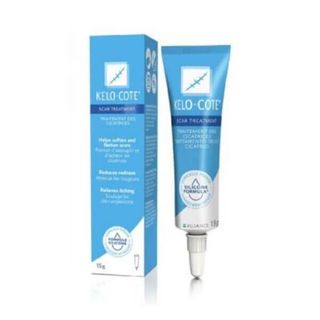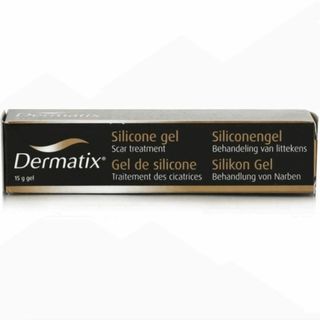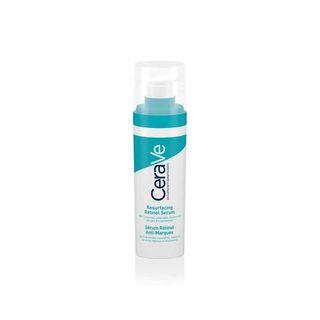
Scars & Marks
Your scars are part of your unique story. Key to the skin’s natural healing process, they’re created when the deep layer of skin (the dermis) is cut or damaged. New tissue forms over the wound, pulling it together and healing it for good. Scars have a different look and texture to the skin that surrounds them. Their appearance can also change depending on where they are on your body. If you feel a little self-conscious about your scars, using a specialist gel or serum can even out the appearance of your skin and help scars to fade more quickly.
Scars & Marks Treatments
- Out Of Stock
 Kelo-Cote Scar Gel
Kelo-Cote Scar Gel - Out Of Stock

Dermatix Silicone Scar Gel
Dermatix Silicone Scar Gel - Out Of Stock

CeraVe Retinol Serum
CeraVe Resurfacing Retinol Serum
View recommended products for Scars & Marks
Don't wait to get the medical help you need.
View our recommended treatments and select your preferred treatment and quantity from a list of options for you.
Selected by our UK-based medical team
Quick and easy checkout
Treatments dispatched same day (before 3pm)
Ordering as easy as 1, 2, 3
1. Find the ideal treatment
We can provide over 1099 leading medicines to treat over 94 conditions.
2. Get a free consultation
Our qualified healthcare professionals will assess your condition and needs.
3. Enjoy speedy delivery
And when the time comes to re-order, it'll only take a couple of clicks.
Advice for Scars & Marks
What causes scars?
Almost everyone will develop scars. Any type of injury can cause scarring, but it can also be a result of surgery or other events including:
- Acne outbreaks
- Surgery
- Skin damage or injuries
- Burns
- Bites
- Infections
- Chickenpox
- Tattoos & piercings
Everyone’s skin is different, so not all of the above events will result in scars. When a scar first appears on lighter skin, it is usually pink or red. The pinkish colour fades over time, and the scar becomes slightly darker or lighter than the skin's colour. Scars frequently appear as dark spots on people with dark skin.
Do scars fade?
Depending on the size and location, the appearance of a scar may change. Scars can fade so much that they are barely noticeable, or they may change colour, but you can’t get rid of scars completely. It’s also possible for scars to become painful or itchy several months or even years after healing. This is because nerve endings grow back.
How long does it take for scars to fade?
This process can take up to 2 years. You cannot get rid of scars entirely, so you'll be left with a visible mark or line, but you can fade the appearance of scar marks. With the right treatment, you can shrink many types of scars, flatten raised scars, and encourage scarring to fade.
What are the different types of scars?
There are many different types of scars that can form. The type of injury or event that caused the wound and the treatment applied to it will affect how the scar tissue develops.
Common types of scars include:
Fine line scars
A minor wound like a cut will usually heal to leave a raised line, which will gradually fade and flatten over time. Fine line scars often occur following surgery or cuts. In most cases, these types of scars are itchy but not painful.
Keloid scars
Keloid scars are raised above the skin. They stem from the overgrowth of tissue that happens when too much collagen is produced at the site of a wound. They often appear darker in colour and occur more frequently on darker skin due to the higher levels of melanin.
Pitted or sunken scars
Pitted scars, also known as atrophic or ‘ice-pick’ scars, have a sunken appearance or look like rounded pits or small indentations in the skin. They are commonly caused by acne scars or chicken pox and often develop on the face.
Contractures
When a large area of skin is damaged (through a burn, for instance), contractures can occur. As the skin heals, the edges are tightly pulled together, and this can decrease the amount of movement you have in that area, especially where muscles, joints and tendons are affected.
Stretch marks
When skin expands or shrinks quickly, the connective tissues under the skin can be damaged, and this causes stretch marks. They are fine lines that commonly appear all over the body as white, purple, pink or flesh-coloured marks during puberty or pregnancy or after weight gain or weight loss.
How to treat scars?
Although scars cannot be prevented entirely since they are a natural part of the skin’s healing process following damage to the dermis, there are scar treatments available that can improve how they appear on the skin’s surface, such as:
Topical gels
Silicone gels can be used on old and new scars. They work by helping soften and flatten scars and can relieve itching and discomfort. Kelo-Cote Scar Gel is suited to scars up to 4 years old including fine line scars, keloids, and contractures. It can also be used under makeup and sunscreen. Dermatix Silicone Scar Gel is designed to support the moisture in the skin to encourage efficient healing following surgery, burns, or injury. This transparent gel dries quickly to flatten and soften scar tissue, effectively fading dark, red, or angry scars.
Pressure therapy
If you want to prevent scarring during the healing process, an elastic bandage, dressing or stocking can be applied to the area to put pressure on the wound. The pressure prevents a scar from forming (or at least decreases its size).
Dermabrasion
If you have irregularities in your scars, dermabrasion can soften and smooth the skin to improve scar formation. This treatment involves gently removing the top layer of skin to blend irregularities such as raised areas.
Skin grafts
Scar-revision surgery (also known as skin grafting) is useful for replacing particularly large scars. The procedure involves transplanting skin from another area, and though it will still leave some scarring, it should be preferable to the original scarring.
Injections
In some cases, injections can be made directly into scars (especially keloid scars) to reduce their size, flatten the skin and reduce itching.
Can all scars be treated?
Yes, every scar can be treated in some way, but there are several factors that will affect the results. Old scars and large areas of scar tissue can be harder to treat, for instance, meaning that you shouldn’t have high expectations when trying to reduce their visibility.
Can scars be prevented?
Most scars can’t be anticipated, but if you foresee a risk of scarring (or know it’s going to occur, such as through surgery), you should take preventative measures to reduce the chances of scars forming. Additionally, if you act quickly when you have a fresh wound, you can reduce the likelihood of a scar forming.
You should do the following to reduce the possibility of scarring when you’ve suffered a wound:
- The stitching left in a wound after surgery or other treatment serves to minimise scarring. For the best results, care for your stitches following the advice provided by your surgeon, nurse or GP.
- Clean a fresh wound by washing the area with soap and water. Remove any dirt or dried blood, and apply a bandage over the wound to keep germs out. Be sure to change the bandage often as the wound heals.
- Keep the wound moist as this can improve the healing process and minimise scars. Applying petroleum jelly or moist burn pads will keep the wound from becoming too dry and developing a scab that can make scarring worse.
- Be mindful of sun exposure. Protect your scar from the sun by keeping it covered or using sunscreen.
Guides for Scars & Marks
title
We've written 1
more guides
for Scars & Marks
We also offer health & advice tailored to you.
